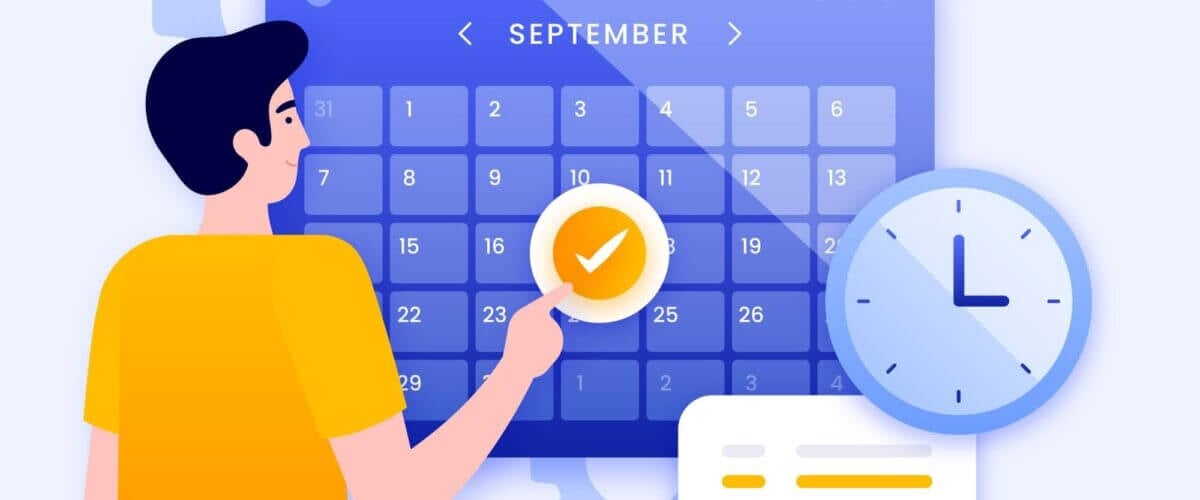How to Choose an Appointment Scheduling System That Fits Your Needs
Service desks, clinics, branches, and retail counters all encounter a common challenge. Lobbies become crowded, phones ring constantly, and walk-ins arrive alongside customers with prior reservations. Staff members strive to manage the flow of arrivals while addressing repeated inquiries about timing and availability.
An appointment scheduling system helps organize this process by allowing customers to reserve time slots, view estimated wait times, and update staff calendars in real-time. For operations that coordinate bookings with live queues, platforms such as Q-nomy connect appointments, check-in, and branch routing in one place.
This post explains how to choose an appointment scheduling system by mapping organizational needs, confirming must-have features, comparing pricing models, and assessing user experience and support.
Table of Contents
What Is an Appointment Scheduling System?

Every busy service team balances booked visits with walk-ins. Without structure, things slip. An appointment scheduling system organizes everything, allowing customers to reserve time, preventing double bookings, and keeping calendars up to date as plans change.
Stronger products add real-time availability checks, confirmations, reminders, and reporting across days, services, and locations. For regulated environments, controls such as audit trails, consent capture, careful data collection, retention rules, and access logs support procurement reviews and ongoing compliance monitoring.
Key Benefits for Businesses and Professionals
The practical benefits for businesses and professionals are evident in daily metrics and at the counter. Typical outcomes include:
- Fewer no-shows with reminders and simple self-service changes
- Higher staff utilization through accurate capacity planning
- Shorter lines because walk-ins and bookings share one queue
- Better data for forecasting demand across days and sites
- More transparent communication that reduces calls and manual follow-ups
These improvements result in shorter wait times, steadier workloads, and more predictable service across all sites.
Identifying Your Specific Scheduling Needs
Start by examining how your service operates. A school that schedules parent-teacher conferences doesn’t need the same features as a cardiology clinic or a retail store. Naming your needs early keeps you from paying for extras you’ll never use.
Consider the following:
- Do you need multi-branch control or just a single office?
- Will routing depend on skill, language, or service duration?
- Do you support both walk-ins and reservations?
- Are documents or preparation tasks required before visits?
The answers will guide the workflow, integrations, and staffing requirements of your business scheduling tool.
Must-Have Features in a Scheduling Tool

Queue-heavy operations require booking and live service control that accurately reflect a typical day at the counter. The essentials below help keep waits shorter, workloads more predictable, and communication more transparent.
- Scheduling and Capacity: Real-time availability for people, rooms, and equipment to prevent conflicts and ensure optimal utilization.
- Omnichannel Booking: Simple self-service on web, mobile, kiosk, and contact center to cut phone traffic.
- Intelligent Routing: Assign by skill, language, service length, location, or priority to reduce handoffs.
- Notifications: SMS and email with quick confirm, cancel, and reschedule links to lower no-shows.
- Integrations and APIs: Provide connectors for calendars, CRM, EHR, and payments to remove manual entry.
- Analytics and Dashboards: Report wait time, abandonment, service duration, and throughput to guide staffing and hours.
- Interface and Accessibility: Clear, fast screens with readable layouts, keyboard navigation, screen reader support, and language options.
Solutions like Q-nomy bring booking, live queue control, routing, and reporting into one place. Still, piloting with real traffic is the best way to confirm suitability.
Comparing Different Pricing Models
Budget planning is easier when you understand how scheduling software is priced. Vendors often mix fixed and variable components. Pay attention to the drivers that apply to your size and growth plan.
When reviewing quotes, check for monthly appointment volume and seasonality, as well as staff and location counts. Include messaging needs, add-ons, required integrations, support tier, and contract terms. A brief pilot during a busy period can surface the fundamental cost drivers.
Evaluating User Experience and Support
A long feature list won’t help if the interface slows people down. Front desk teams need a simple dashboard to add capacity, pause services, or redirect traffic when call volumes increase. Managers need live views across sites and quick ways to shift staff.
Run a brief test on both a phone and a computer, then hand the business scheduling system over to a new hire. If basic tasks take only minutes without coaching, the design is doing its job.
Support quality is equally important. Consider availability, response times, uptime history, and whether training and sandbox environments are provided.
Choosing What Fits Your Operation
Selecting the right scheduling software starts with defining what it needs to deliver. A dependable platform enhances accuracy, reduces missed visits, and provides staff with more control during busy hours. Customers benefit from shorter waits and more transparent communication, while organizations gain the predictability needed for better planning.